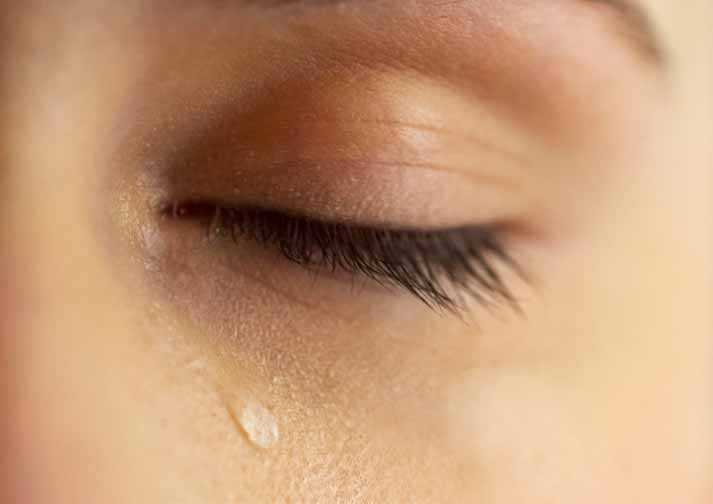Satellite Office
4660 Kenmore Avenue, Suite 416Alexandria, VA 22304
703-620-4300

When someone cries, they’re usually feeling strong emotions, and the last thing they’re wondering is how their tears are produced. But what about when the eyes tear up when someone isn’t crying? Before we can answer that question, it’s important to understand that all tears come from a combination of three components.
First, the lacrimal gland, which sits under the upper eyelid by the lateral brow, produces the aqueous or water portion of your tears. Second, the meibomian glands, which are minuscule glands that line the lid margins, secrete oil that coats the eye. Lastly, the goblet cells, which are on the white of the eye, produce mucin. These three elements, working together, make up a healthy tear film on the eye.
However, if one of these components is out of sync with the others, it can result in tearing. This is a condition in which tears can puddle on the lower lid margin or in some cases overflow and spill down the face. At times, it can be a natural reaction; for example, when a person walks through cold, windy weather or if they read for long periods of time, the eyes get dry. In an attempt to catch up with any dry spots, the eyes will create more tears. However, when this occurs frequently and without a clear reason, it’s important to seek medical help.
When we see a patient with this ophthalmic issue, our first priority is to determine whether or not the glands/cells of the eye are functioning in their appropriate manner. It could be that any one or more of these three key components of your tears are not producing enough to keep the ocular surface happy, resulting in reflex tearing in an attempt to catch up. If this is not the issue, there could be a blockage in the punctum, canaliculus or nasolacrimal duct, all of which make up the tear drainage system allowing tears to naturally drip into the nose. Yet another cause could be a loose eyelid that doesn’t blink moisture across the eye properly.
A method we use to determine the issue is to apply fluorescein, a special dye that sticks to the eye, and any delay in dye drainage from the eye after 10 minutes could suggest the drainage system or the lid blinking function is compromised. This can be further evaluated with a special irrigation technique to detect any possible areas of blockage in the tear drainage system.
|
With a detailed evaluation, we can determine what is causing the problem and take steps to repair it. If you or a family member are having problems with tearing, call our office today at (703) 620-4300 to set up an appointment. |
  |